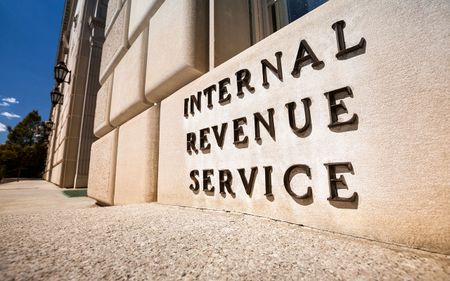Saver's Credit: Who Qualifies for This Retirement Tax Break?
If your income isn't too high, the Saver's Credit can help lower your tax bill if you contribute to a retirement account.

Katelyn Washington
Saving for retirement is even more rewarding if you qualify for the Retirement Savings Contribution Credit, better known as the Saver's Credit. This tax break is designed to encourage people with low and middle incomes to begin building their retirement nest eggs. For those who qualify for the Saver's Credit, the lower your income, the higher the percentage of retirement plan contributions you get back on your tax return.
Who qualifies for the Saver's Credit?
For the 2023 tax year, single filers and married people filing a separate return with modified adjusted gross income (MAGI) of $36,500 or less may be eligible. Married couples filing jointly must have a modified AGI of $73,000 or less, while head-of-household filers must have a modified AGI of $54,750 or less.
However, some people can't claim the Saver's Credit, regardless of income. Taxpayers under 18 years of age, full-time students, and anyone claimed as a dependent on someone else's tax return aren't eligible. You're considered a full-time student for purposes of the credit if, during any part of five months of the year, you:

Sign up for Kiplinger’s Free E-Newsletters
Profit and prosper with the best of expert advice on investing, taxes, retirement, personal finance and more - straight to your e-mail.
Profit and prosper with the best of expert advice - straight to your e-mail.
- Were enrolled as a full-time student at a school (including a technical, trade, or mechanical school); or
- Took a full-time on-farm training course offered by a school or a state, county, or local government agency.
How much is the Saver's Credit?
If your income falls within the credit limits, you can claim up to $1,000 for single filers or $2,000 for joint filers. The credit is based on 10%, 20%, or 50% of the first $2,000 ($4,000 for joint filers) you contribute to retirement accounts, including 401(k)s, traditional IRAs, and Roth IRAs (rollover contributions don't count).
The following table shows which percentage you would use for the 2023 tax year, depending on your income and filing status.
| Married Filing Jointly | Head-of-Household | Other Filing Statuses | Percentage of Contribution Allowed |
| AGI of $43,500 or less | AGI of $32,625 or less | AGI of $21,750 or less | 50% |
| AGI of $43,501 to $47,500 | AGI of $32,626 to $35,625 | AGI of $21,751 to $23,750 | 20% |
| AGI of $45,501 to $73,000 | AGI of $35,626 to $54,750 | AGI of $23,751 to $36,500 | 10% |
| AGI over $73,000 | AGI over $54,750 | AGI over $36,500 | 0% |
The Saver's Credit is a nonrefundable tax credit. That generally means the credit is only worth as much as the tax you owe.
In other words, the credit can't reduce your tax liability below $0 or generate a tax refund by itself. For example, if you owe $500 of tax before applying the credit, but you qualify for a $750 Saver's Credit, you won't owe any tax, but you won't be getting a refund for $250, either.
How to claim the Saver's Credit
To claim the Saver's Credit, you need to complete Form 8880 (Credit for Qualified Retirement Savings Contributions) to calculate the amount of your credit. You will then report the credit amount on your federal Form 1040. Make sure you attach Form 8880 when you file your return.
Related Content
Get Kiplinger Today newsletter — free
Profit and prosper with the best of Kiplinger's advice on investing, taxes, retirement, personal finance and much more. Delivered daily. Enter your email in the box and click Sign Me Up.

In his former role as Senior Online Editor, David edited and wrote a wide range of content for Kiplinger.com. With more than 20 years of experience with Kiplinger, David worked on numerous Kiplinger publications, including The Kiplinger Letter and Kiplinger’s Personal Finance magazine. He co-hosted Your Money's Worth, Kiplinger's podcast and helped develop the Economic Forecasts feature.
- Katelyn WashingtonFormer Tax Writer
-
 How Caregivers for Adults Can Save on Taxes in 2025
How Caregivers for Adults Can Save on Taxes in 2025Tax Breaks Caring for your parent or spouse can be stressful, but the IRS offers tax breaks for qualifying taxpayers. Here they are.
By Kate Schubel Published
-
 The Stock Market Is Selling Off. Here's What Investors Should Do
The Stock Market Is Selling Off. Here's What Investors Should DoInvestors are fleeing the equities market en masse in response to the Trump administration's "jaw-dropping" tariffs. But the experts say don't panic.
By Karee Venema Last updated
-
 How Caregivers for Adults Can Save on Taxes in 2025
How Caregivers for Adults Can Save on Taxes in 2025Tax Breaks Caring for your parent or spouse can be stressful, but the IRS offers tax breaks for qualifying taxpayers. Here they are.
By Kate Schubel Published
-
 New South Carolina Income Tax Cut Might Eat Your Cash
New South Carolina Income Tax Cut Might Eat Your CashState Taxes South Carolina’s flat income tax bill could have the majority of residents paying higher income taxes. Find out how.
By Kate Schubel Published
-
 U.S. Treasury to Eliminate Paper Checks: What It Means for Tax Refunds, Social Security
U.S. Treasury to Eliminate Paper Checks: What It Means for Tax Refunds, Social SecurityTreasury President Trump signed an executive order forcing the federal government to phase out paper check disbursements by the fall.
By Gabriella Cruz-Martínez Published
-
 IRS Layoffs Spark Delays, Doubt This Tax Season
IRS Layoffs Spark Delays, Doubt This Tax SeasonTax Season Tax experts say Trump’s downsizing of the IRS is already causing problems.
By Gabriella Cruz-Martínez Last updated
-
 States with the Highest Income Tax Rates for Retirees
States with the Highest Income Tax Rates for RetireesState Tax You may reconsider living and retiring in one of these states due to high taxes.
By Kate Schubel Last updated
-
 AI Tax Scams Target Middle and Older Adults: What to Know
AI Tax Scams Target Middle and Older Adults: What to KnowScams Whether you’re a retiree or Gen Z, scammers can gouge big financial losses with the help of artificial intelligence.
By Kate Schubel Published
-
 Tax-Deductible Home Improvements for Retirement in 2025
Tax-Deductible Home Improvements for Retirement in 2025Retirement Taxes Your aging-in-place plan could benefit from the medical expense tax deduction. But watch out for capital gains and property taxes.
By Kate Schubel Published
-
 Don’t Make These Five Mistakes on Your Tax Return
Don’t Make These Five Mistakes on Your Tax ReturnTax Filing The IRS warns taxpayers to watch out for these common errors as they prepare to file.
By Gabriella Cruz-Martínez Published

